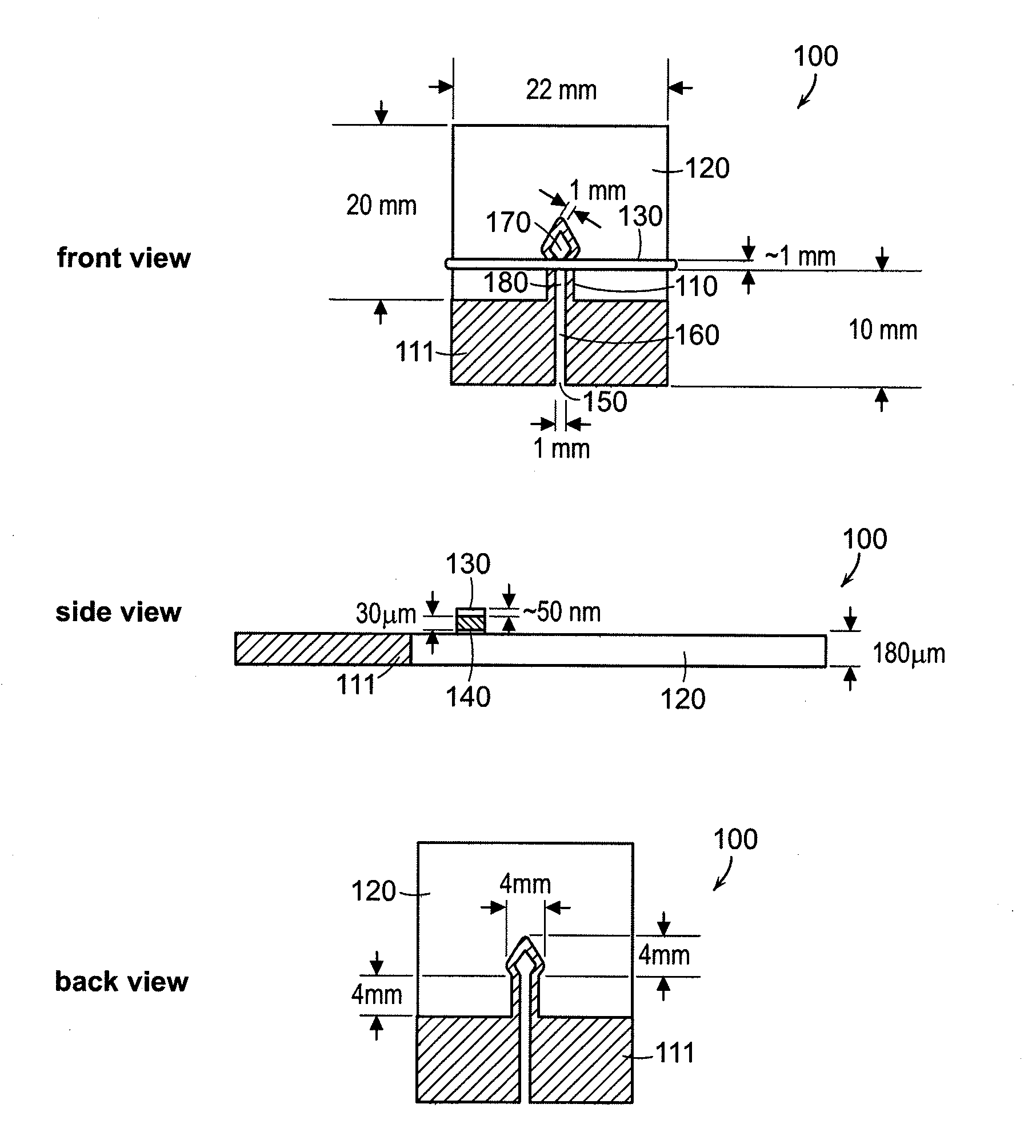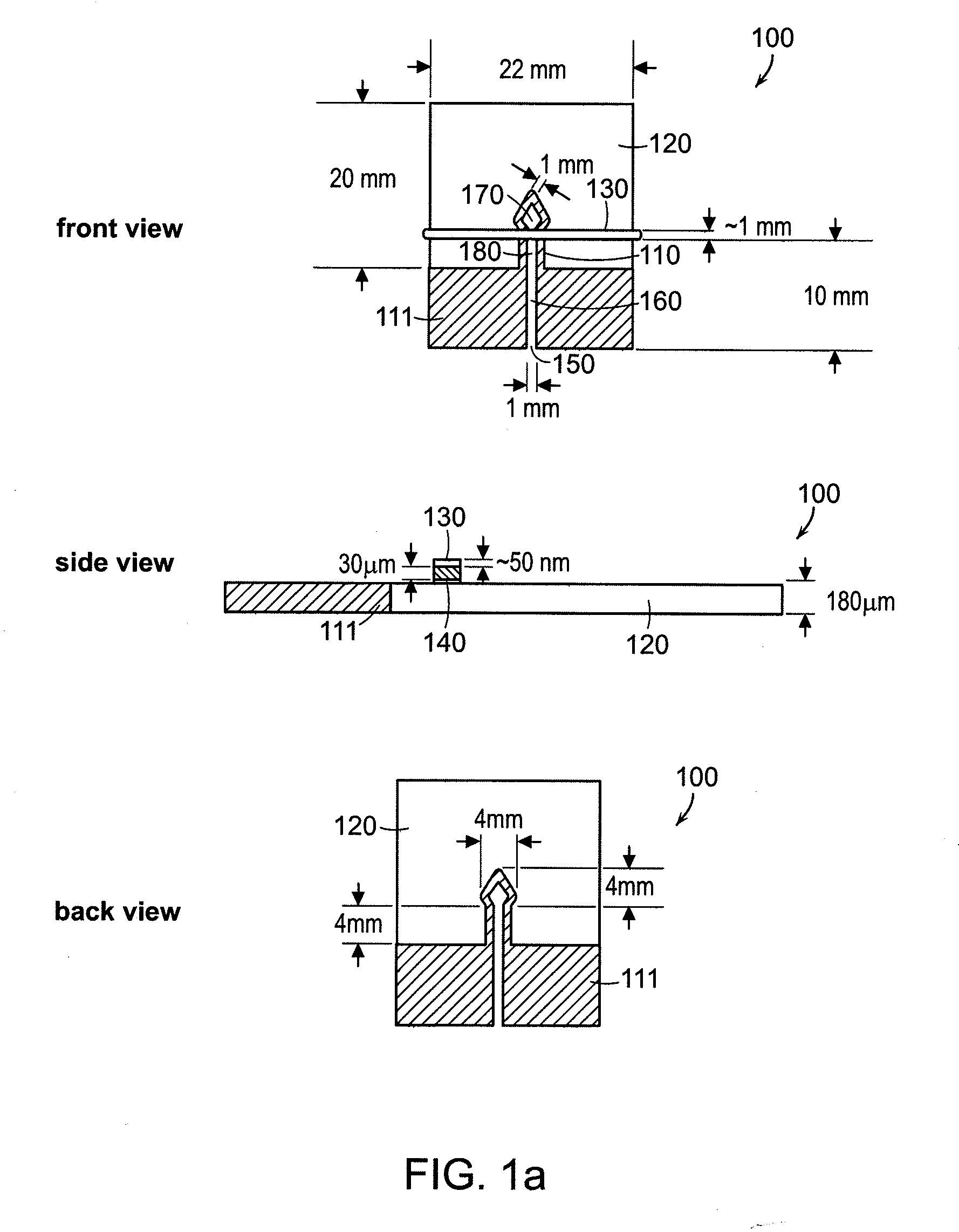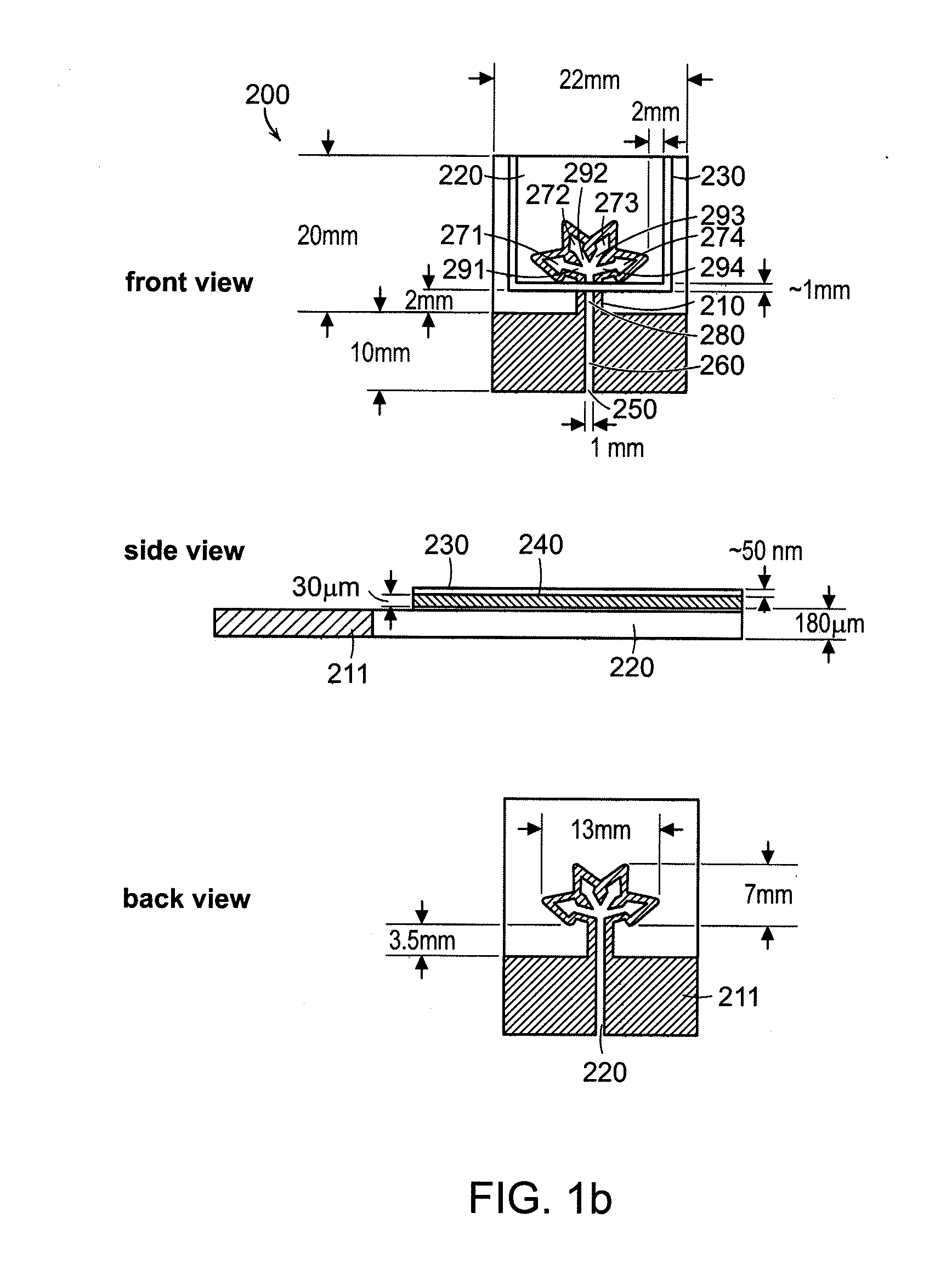Paper-based microfluidic systems
- Summary
- Abstract
- Description
- Claims
- Application Information
AI Technical Summary
Benefits of technology
Problems solved by technology
Method used
Image
Examples
example 1
Preparation and Use of Paper Microfluidic Device for Analyte Concentration
[0102]Fabricating a Paper Microfluidic Device
[0103]The prototype μ-PADs was fabricated in a two step process (see FIG. 2). The μ-PADs were prepared in a two-step process that involved creating patterns of hydrophobic polymer in paper, and patterning conductive gold pathways onto the paper-based microfluidic devices.
[0104]First, the microfluidic channels were formed in Whatman filter paper 1 using photolithography and SU-8 photoresist, as described previously (Martinez et al., Angew. Chem. Int. Ed., Eng. 46:1318-1320, 2007). Briefly, this process involved embedding SU-8 photoresist into Whatman filter paper 1, drying the paper to remove the cyclopentanone in the SU-8 formula, and then irradiating the paper for around 3.5 min (using a 100 W mercury lamp) through a pattern of black ink printed onto a transparency. The paper was heated at 90° C. for 10 min, soaked in propylene glycol methyl ether acetate (3×5 min)...
example 2
Preparation and Use of Paper Microfluidic Device for Detecting Salt Concentration
[0114]Fabricating a Paper Microfluidic Device
[0115]Microfluidic channels were fabricated in filter paper (Whatman, Inc.) using a process described previously (Martinez et al., Angew. Chem. Int. Ed., Eng. 6:1318-1320,2007) (see FIG. 5). The patterns for the microfluidic channels were designed on a computer using a layout editor (Clewin, WieWin Inc.) and a photomask was printed from the design using an inkjet printer and a transparency film. The microfluidic channels were patterned in Whatman filter paper 1 using the following process: (i) paper (2.5 cm×2.5 cm×200 μm) was soaked in resist (SU-8 2010, Microchem Inc.), and a rolling pin was used to press excess resist from the paper; (ii) the paper was dried for 10 min at 95° C., the photomask was clamped to the paper by pressing them together as a sandwich between two glass slides that were held together with binder clips, and the paper was exposed to UV l...
example 3
Preparation and Use of Paper Microfluidic Device with Switches and Valves
[0128]Fabrication of the Devices
[0129]The microfluidic devices were fabricated using a process that consisted of three general steps: (i) photolithography on a Whatman filter paper 1 using SU-8 photoresist, according to product specifications (MicroChem Corp., Newton, Mass.); (ii) fabrication and attachment of metal-tape wires: 50 nm layer of gold was sputtered (Cressington Model 208HR sputter coater, 60 mA, 50 s sputtering time) onto a matt side of the Scotch tape and attached to the device as a 1-mm-wide strip; and (iii) assembling all the layers of the device.
[0130]Switching the Channels On / Off
[0131]To investigate the switching on / off process in the paper channel, an aqueous solution of red dye (0.05 mM aq. disodium 6-hydroxy-5-((2-methoxy-5-methyl-4-sulfophenyl)azo)-2-naphthalene-sulfonate, allura red) was used to visualize the effectiveness of the device. The solution was conveyed to the central channel of...
PUM
 Login to View More
Login to View More Abstract
Description
Claims
Application Information
 Login to View More
Login to View More - R&D
- Intellectual Property
- Life Sciences
- Materials
- Tech Scout
- Unparalleled Data Quality
- Higher Quality Content
- 60% Fewer Hallucinations
Browse by: Latest US Patents, China's latest patents, Technical Efficacy Thesaurus, Application Domain, Technology Topic, Popular Technical Reports.
© 2025 PatSnap. All rights reserved.Legal|Privacy policy|Modern Slavery Act Transparency Statement|Sitemap|About US| Contact US: help@patsnap.com



